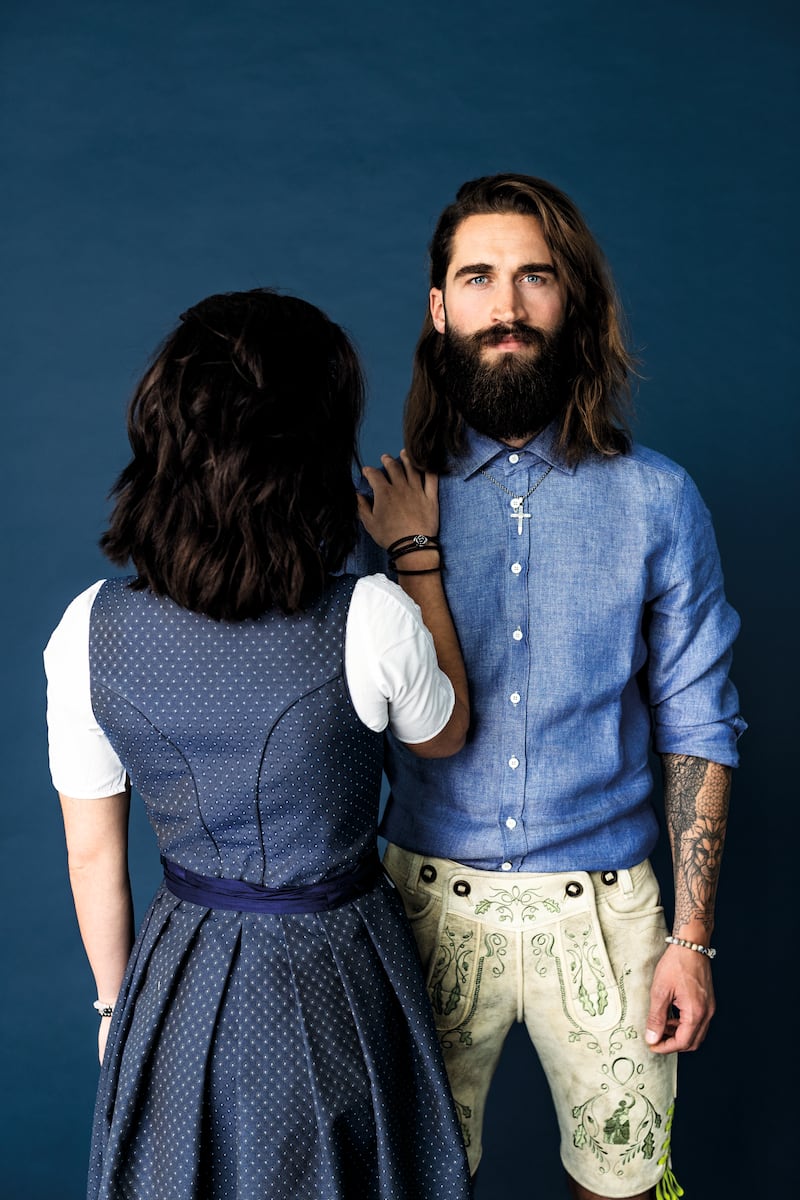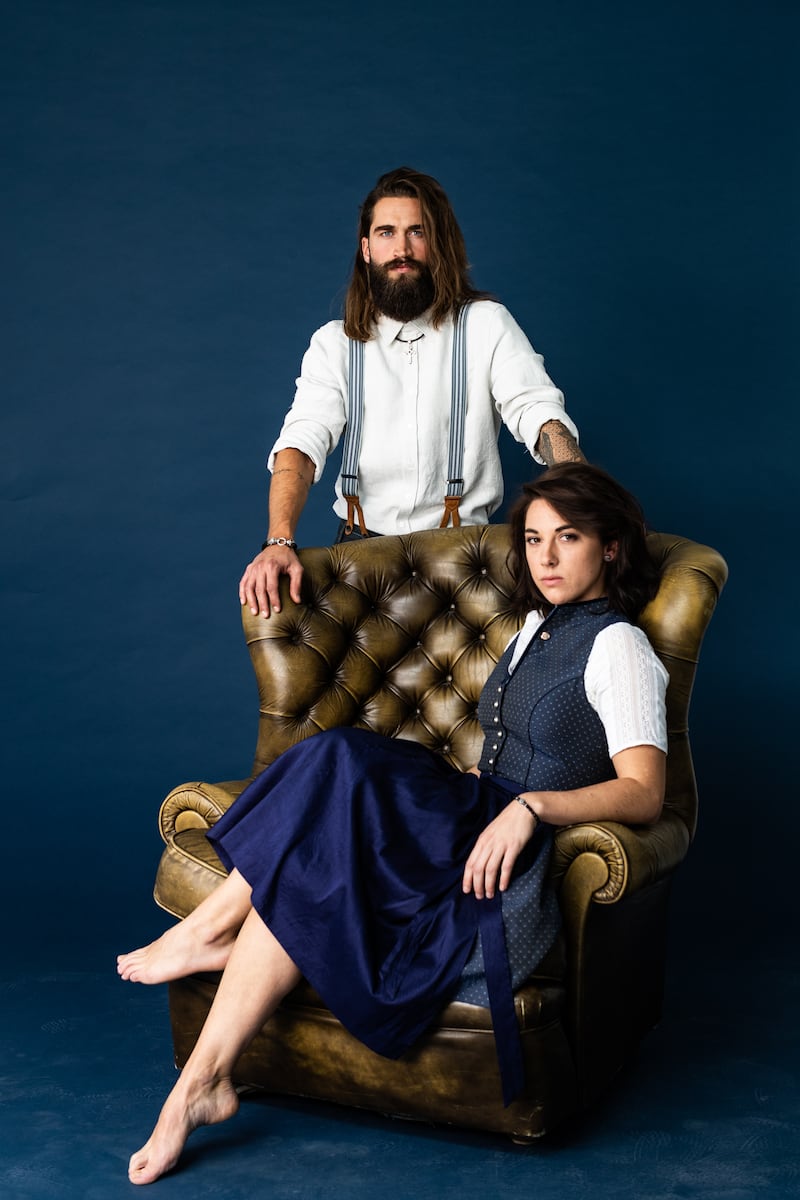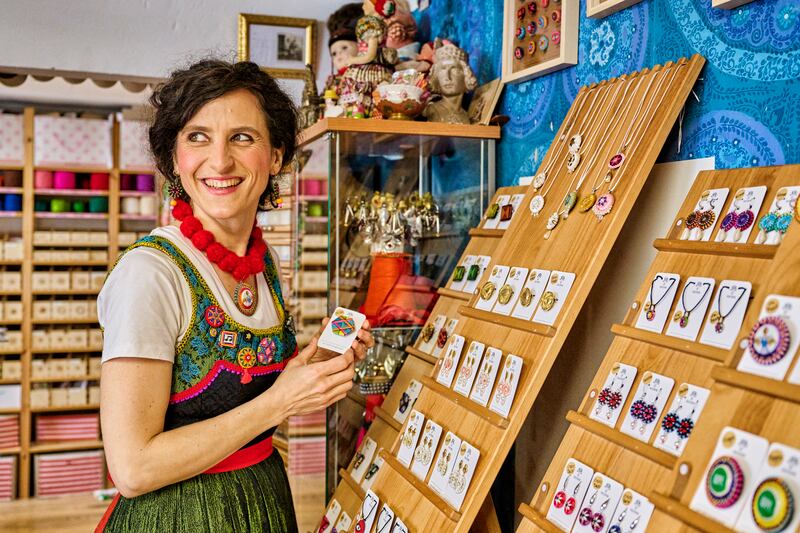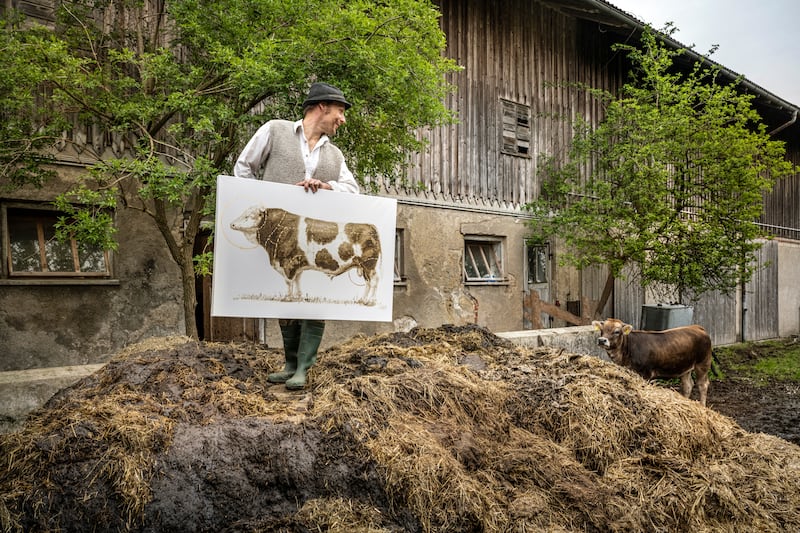“Jewellery is everything about taking time,” explains Florian Blickenberger in his alpine village studio near Rosenheim in Bavaria. We are taking lessons at his weekend workshop in making pendants, learning how to saw, grind and polish silver pieces with painstaking attention to detail.
A former sommelier, who left home at 17 but returned to found Mamma Bavaria in 2015, the barefooted goldsmith is known for his wedding jewellery, bracelets and exquisite rose lapel pins but, particularly, his signature silver summit crosses that come in a variety of designs inspired by the surrounding landscape. For him, they are symbols of life “pointing in four directions” rather than religious motifs.
A keen climber and hiker who lives close to the mountains, he joins us on a gondola to the Hochries mountain summit at 1,569 metres, where hiking guide Stefanie Praml from Munich Wanderland explains that before mountaineering became a popular pastime, summit crosses were for orienteering.
“People didn’t voluntarily climb mountains then,” she explains, “and it was only in the 18th century when the first ascent of Mont Blanc in 1786 was made – the birth of mountaineering – that they were used for surveying, commemorating fallen soldiers and Christian symbols.”
READ MORE
This alpine region has a distinct cultural landscape characterised by mountain pastures and lakes and is the heart of long-standing traditions proudly kept alive by a new generation. Mamma Bavaria not only sells jewellery but also very beautiful dirndls and lederhosen, familiar 19th century alpine dress now considered cool and trendy by millennials who wear them at every occasion, from discos to weddings.


During our visit, we see them worn stylishly on the streets of Munich and at an upmarket matrimonial celebration party near Lake Tegernsee, where most of the guests are attired this way.
These modern, sleeker versions of dirndls that look anything but folksy with their low-cut, fitted bodices, skirts and aprons come in luxurious silks and brocades, often accessorised with chatelaines tucked into the waist or with silver buttons, buckles and necklaces. The deerskin lederhosen, occasionally embroidered, are surprisingly heavy but teenagers in Bavaria are forgoing jeans and T-shirts for this gear, subverting its traditional associations.
[ The luxury Irish design destination that celebrates Irish textilesOpens in new window ]
One city worker tells me she has six dirndls, while a local green politician Michelle Rodel occasionally rocks up in one on campaigns. “Fashion brands and designers have also jumped on the bandwagon and keep perpetuating the trend so that, today, you can buy fashion dirndls and lederhosen in all price ranges,” says Christiane Steckenbiller, a Bavarian and professor of German Studies at Colorado College in the United States.
“As Germans, we can’t and typically don’t express national pride because of our history. But it is okay to identify more strongly with one’s region and be proud of that cultural heritage.”

Earlier, we met custom tailor and button maker Sandra Muller at her village home, a kaleidoscopic vision in a green dirndl with purple tights, yellow shoes and a blue and orange waistcoat. Muller “fell in love with buttons”, studied what was a dying 18th century craft and now makes them not only for clothing but also for use in decorative necklaces and earrings, using historical techniques to create something modern.
From a family tailoring background, she also sells waistcoats and tasselled smoking caps to a mostly German clientele, in material sourced from the last factory producing jacquard textiles. Like Florian, she holds workshops on how to tie the buttons with different silk threads for vibrant and unusual decorative effects and has authored a book on the subject.
I want to reflect on the relationship between us and the cows and on our relationship with nature
— Werner Hartl
The countryside around her is flat and green, enlivened with fields of yellow rape in the summer sunshine. There are no hedges, boundaries or walls and all is very orderly, with picture perfect woodpiles adjoining nearly every village house, including that of farmworker Werner Hartl, whom we visit at his barn in a restored 500-year-old building.
There is nothing to distinguish it from any other until you go inside to see its surprising contents – not hay, but artwork with a difference. Hartl has made a name and a thriving business as Germany’s only cow dung artist, winning commissions for his work all over the country.
A freelance illustrator who once worked as a farmhand, it all started when he noticed the way dried dung stuck to all kinds of surfaces and he began experimenting with it on various materials, adding water for different shades.
“I want to create awareness of how food is produced and the effort required to produce it. About 80 per cent of food is produced by small farmers and not by industry,” he says, sporting lederhosen and a Tyrolean hat.

Many of these sepia style paintings, often presented in old window frames, are portraits of cows or realistic scenes of rural life. He produces around 250 paintings a year, selling at exhibitions in Tyrol and elsewhere.
“I combine gold leaf with the dung sometimes for interesting effects,” he adds, demonstrating the procedure. The dung smells grassy, not unpleasant, but he is keen to stress the underlying motive of his work. “I want to reflect on the relationship between us and the cows and on our relationship with nature.”
With his wife and children, he lives in a village of some 2,500 inhabitants, selling eggs from his flock of rare breed hens and making a living working occasionally on radio and television.
In this area of Bavaria, transhumance still prevails. Cows are brought up to the high alpine pastures in May and left there until November when they are driven down from the mountains for the winter in an age-old practice dating back to medieval times.
A thriving local cheese dairy and restaurant called Naturkaserei TegernseerLand was founded in 2010, when 19 farmers with herds from four to 42 cows banded together to form a co-op. The breed is the brown and white Alpen Fleckvieh, which can produce 20 to 30 litres of milk per day, and inside the dairy, 40 tons of cheese are stored at 11 degrees. It is a popular tourist spot, just an hour from Munich, and has a shop selling cheese, yoghurt, jam and other products.
“We want to produce and sell local,” says a spokesman. “People come for the mountains, the fields and the cows.”
[ Looking for cheap, stylish interiors? H&M Home opens first shop in IrelandOpens in new window ]
Bavaria is, of course, famous for its beer and its popular Munich Oktoberfest festival. In the final part of the trip, we visit the Hoppebrau family brewery in the alpine foothills for a tasting of four different beers from a brewery committed to making premium beers.
Packed with locals on a celebratory outing with the tap house lit up like a disco, the tasting draws attention to the quality of locally sourced ingredients, and the importance of their combination in the final flavours – the malted wheat and barley, the types of yeast and the importance of the hops.
Such first-class ingredients and innovative technology have ensured what they describe as a “clear, fresh, fruity drinking experience”. We also learn that more women are getting involved in beermaking and as cicerones, the equivalent of wine sommeliers.
Whatever about the delights of the drinking experience, visiting Bavaria for the first time was an engaging and diverse adventure, seeing traditional crafts in a new light and learning how 60 per cent of the Bavarian population live, work and do business in rural areas. The sense of heimat – meaning home, identity, rooted in the familiar landscape – is strong, and came across in everyone we met.
One note of caution: public transport in the area, while efficient, can’t be relied upon to cover the places we visited on this trip. Taxis are not always available at train or bus stations so hiring a car to get around is necessary to follow a similar itinerary.
The train from Munich airport to the city centre takes 40 minutes. Most restaurant menus are in German. We stayed in the Hotel Maximilian in Augsburg (about 80km from Munich), in Parkhotel Egerner Hofe in Lake Tegernsee and the Holiday Inn Express in Rosenheim, courtesy of Bavaria Tourism.













